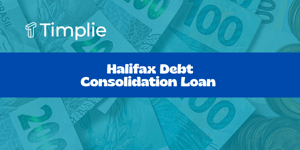Debt can be overwhelming, but with the right approach, it transforms into a strategic tool for wealth building and opportunity. When borrowers adopt informed financial decisions to use debt, they unlock doors to education, business growth, and homeownership without sacrificing financial stability. This article explores practical methods to minimize loan burdens and optimize outcomes.
Introduction to Smart Borrowing
Smart borrowing involves assessing loan offers, understanding repayment structures, and aligning debt with your long-term objectives. By mastering these principles, you can reduce stress, protect your credit score, and achieve personal or professional milestones.
The goal is clear: use debt as a lever for progress rather than a weight holding you back. With informed choices and disciplined planning, reduce interest costs over time and move closer to financial freedom.
Key Strategies for Smart Borrowing
Implementing targeted strategies ensures every dollar borrowed works in your favor. Consider the following eight approaches as pillars of a responsible debt management plan:
- Choosing Low-Interest Loans
- Debt Consolidation
- Budgeting and Financial Planning
- Prioritizing Needs Over Wants
- Building an Emergency Fund
- Investing in Growth Opportunities
- Negotiating with Lenders
- Maintaining a Good Credit Score
When you select a loan, aim for options that reduce interest costs over time. Government-backed programs, credit union offerings, and promotional refinancing deals often present the lowest rates. Consolidating high-interest credit card balances into a single personal loan not only streamlines payments but also simplifies financial management and reduces stress by eliminating multiple due dates.
Effective budgeting lays the foundation for borrowed funds to serve you, not the reverse. Apply the 50-30-20 rule to allocate income: 50% to necessities, 30% to discretionary spending, and 20% to savings and debt repayment. At the same time, match loan type to asset financed—for instance, choose a mortgage for property purchases and a specialized auto loan for vehicle financing. Establish clear boundaries between needs and wants to avoid borrowing for non-essential expenses.
An emergency fund acts as a protective buffer against unforeseen costs. Aim to cover three to six months of essential living expenses before leaning on credit in a crisis. Complement this safety net by selectively borrowing for opportunities with high-return potential: consider student loans for accredited education or home equity loans for rental property investments. Together, these steps help you save enough for unexpected expenses while positioning yourself for growth.
Borrowing power is enhanced further by proactive negotiation and credit management. Always inquire about rate reductions, fee waivers, or repayment flexibility with lenders. Cultivate responsible credit behavior—timely payments, low utilization, and periodic reviews—to build a strong credit history over time. A robust credit profile unlocks preferential interest rates and favorable loan terms.
Managing Risk and Rewards
Every loan carries inherent risks and potential rewards. Smart borrowers evaluate both sides before signing on the dotted line. Start by balance risk to maximize returns: diversify your investment of borrowed funds across assets with differing risk profiles, such as index funds, real estate, or continuing education.
Perform rigorous calculations of projected returns versus borrowing costs. Factor in variable interest rate scenarios, repayment timelines, and tax implications. A clear understanding of the net benefit positions you to decide whether a particular loan aligns with your financial goals or exposes you to undue vulnerability.
Smart Borrowing in Different Contexts
Loans manifest differently depending on the borrower’s life stage and needs. In the realm of education, prioritize grants and scholarships—prioritize free money and scholarships—before accepting student loans. When borrowing is necessary, cap your debt at amounts you can realistically pay off within a decade to avoid excessive interest accrual.
For entrepreneurs and small business owners, align loan structures with the lifecycle of the financed asset. Opt for equipment loans with terms matching the equipment’s useful life, and secure working capital through revolving lines of credit for flexibility. This approach match loan type to asset financed ensures repayment schedules mesh with revenue generation timelines.
Conclusion
Smart borrowing is a mindset that transforms debt from a burden into a strategic resource. By choosing the right loan products, creating robust budgets, and building emergency reserves, you lay the groundwork for sustainable financial health.
Embrace negotiation, maintain stellar credit habits, and always analyze the risk-to-reward ratio before committing to debt. With these insights, you’ll minimize stress, preserve wealth, and confidently leverage borrowing to pursue your greatest ambitions.
References
- https://www.wealthformula.com/blog/leveraging-leverage-smart-borrowing-strategies-for-wealth-growth/
- https://www.edvisors.com/money-management/debt-management/minimize-debt/
- https://www.edvisors.com/student-loans/private-student-loans/smart-borrowing-to-minimize-debt/
- https://www.ffbkc.com/blogs/borrowing/3-examples-of-smart-borrowing/
- https://breakingac.com/news/2025/feb/25/smart-borrowing-tips-for-managing-debt/
- https://extension.wvu.edu/youth-family/finances/blog/2025/04/01/smart-strategies-for-effective-debt-management
- https://www.liveplan.com/blog/funding/smart-borrowing
- https://www.mmbb.org/resources/e-newsletter/2025/april-may/smart-strategies-to-reduce-student-loan-and-other-debt










